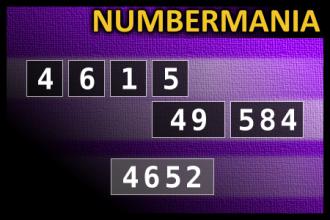Calculate the number 4652
NUMBERMANIA: Calculate the number 4652 using numbers [4, 6, 1, 5, 49, 584] and basic arithmetic operations (+, -, *, /). Each of the numbers can be used only once.
Winning toast
Patrick hoisted his beer and said: "Here's to spending the rest of my life between the legs of me wife!"
And with that he took home the top prize for the best toast of the night.
In bed later that night, he told his wife: "Mary, I won the prize for the best toast of the night."
She said: "Aye, Paddy, what was your toast?"
So he told her: "Here's to spending the rest of my life sitting in church beside me wife."
"Oh," she said, "that is very nice, dear."
The next day, Mary ran into one of Paddy's drinking partners in the street.
Mischievously, the man said: "Did you hear about your husband winning a prize in the pub the other night for a toast about you, Mary?"
She replied: "Aye, and I was a bit surprised. Till now, he's only been down there twice. Once he fell asleep, and the other time I had to pull him by the ears to make him come."

